To grow good quality seedlings is troublesome and laborious. To do this, she needs to create the right climatic conditions. Everyone dreams of a good harvest and fast growth of plants. In the past few years, small mini-greenhouses have begun to gain the most popularity. They create ideal conditions for the growth of cultivated plants, both in the garden and in the apartment.
Content
What is it needed for
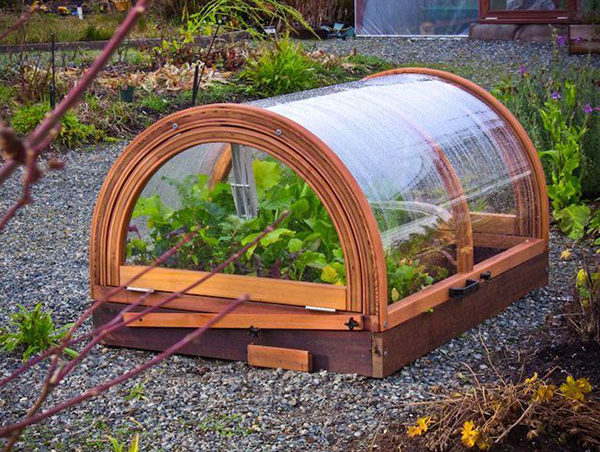
Mini-greenhouses are used for growing cultivated plants not only in the summer cottage, but also in the walls of a city apartment. It is suitable for planting whimsical and heat-loving varieties.
- Protects young plants from winds, drafts and rainfall.
- Provides the necessary climatic conditions for plants.
- When transplanting to open ground, young seedlings do not get sick, as addiction occurs slowly and gradually.
- Plant care is quite simple.
- They are simple not only to install, but also to store.
Most suburban areas are small in area. Full installation greenhouses impossible. Since such structures occupy most of the site.
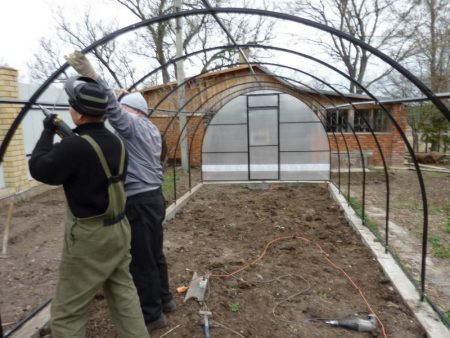 You may be interested in:
You may be interested in:Differences between greenhouses and greenhouses
All gardeners know that there are two irreplaceable structures on the plot for growing not only seedlings, but also adult plants. But there are significant differences between them:
- Height is not more than 0.5 meters.
- It lacks windows and doors.
- The greenhouse is heated in a natural way. To do this, use sunlight and bio-fuel.
- You can change their location.
- These are temporary structures that are used mainly only for the summer season.
- Year-round use is possible in room conditions.
Kinds
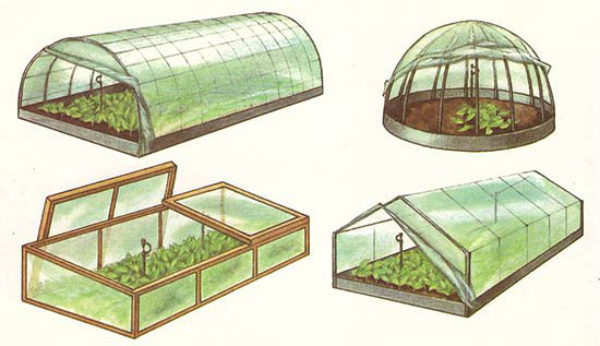
There are a lot of types of miniature greenhouses. They may vary in size, shape and covering material. We present to you several popular species that can often be found both in the apartment and on the site.
"Home"
The design is small in size. Fits on any windowsill. Used for growing seedlings at home. They are similar in design to street greenhouses, but in miniature. Installation in several levels is possible. It can be designed with your own hands or purchased in a store for gardeners.
Portable board construction
It is a box-shaped design that does not have a bottom. As a covering material, a plastic film or glass is used. Its convenience lies in the fact that, if necessary, it can be installed anywhere on the site. Its main application is to protect plants from frost.
"Belgian"
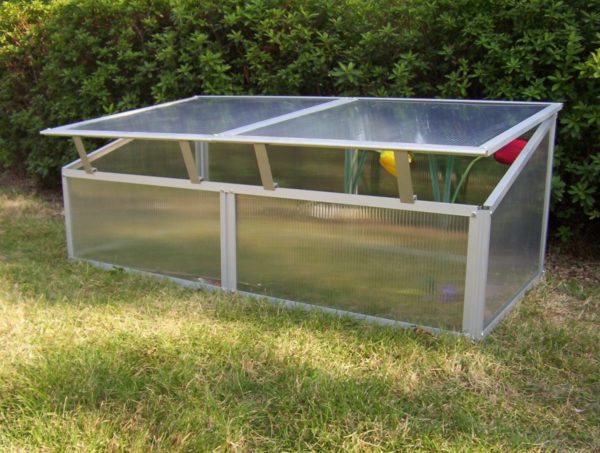
To build this model you will need to dig a ditch. Arrange ridges with fertile soil in it. Cover with polyethylene, glass in a frame or a sheet of polycarbonate.
Butterfly Model
It is named after a small feature, which consists in the opening of the leaves on both sides. They are visually similar to a butterfly. The main advantage is access to plants, which is possible on both sides. In size, it can be any, but in most cases they use small structures that do not take up much space in the garden.
The bread box model
It has one wing that rises completely to the top. The roof is semicircular. The sash opens by sliding it over the main part of the roof. Access to plants is easy. Place on the site does not take much.
"Shelf"
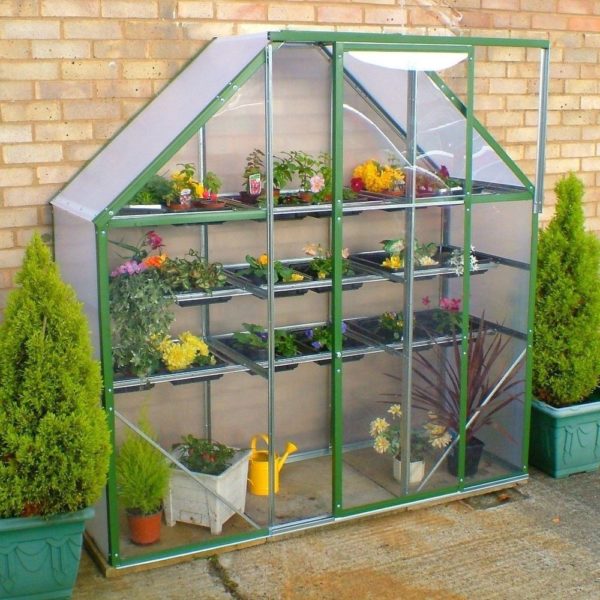
To build this type of greenhouse, an unnecessary rack or cabinet is suitable. The cabinet is left without a back wall and covered with polyethylene or coated with polycarbonate. Instead of doors, frames are used with the same covering material with which the back wall is closed. Visually, this design resembles a shelf from a store. Easily installed on any balcony or loggia of a city apartment and used all year round.
Model "Wall"
This miniature structure is installed at the walls of farm buildings or at home. Compact Great design for small areas. The roof is mostly of a sloping type. There is a minus, but not significant. In winter, you need to constantly clear of snow.
From improvised materials
A good solution in the arrangement of a personal plot will be small greenhouses, which do not require any financial investments. And they will take up very little space on the site.
Plastic bottles
To build this mini-greenhouse, you need a simple bottle from 5 to 10 liters. Making a greenhouse out of it is simple:
- Cut a rectangular hole. One side does not need to be incised. This will be the door to the future greenhouse.
- Fill the bottle with nutritious soil.
- Plant seeds are planted.
- After hatching and rooting of seeds, the greenhouse is opened.
Old tin barrel
From an old barrel that has not been used for a long time, you can make a mini-greenhouse. This process is simple and consists of several steps:
- Several holes are cut from the sides of the barrel.
- A dense covering material is attached to the upper edge of the barrel, for example, a double-folded plastic film.
- The holes should be located at the level at which it will be convenient for you to follow the plants.
- The barrel is filled with earth and plants are planted in it.
Window frames
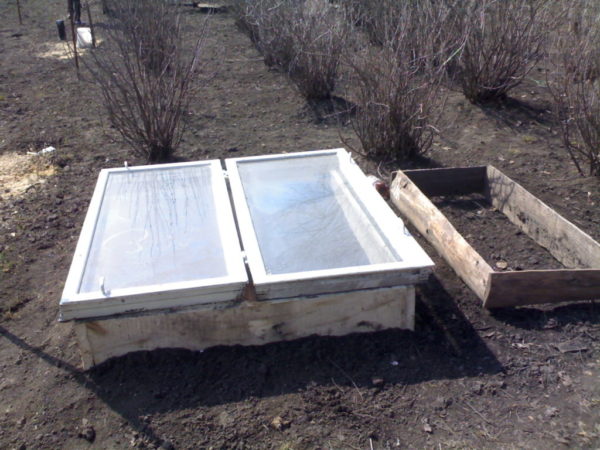
A mini-greenhouse made of this material is installed once and should not be moved more. The old window frames are heavy and massive. To install them, you will need to build a foundation. Further, the construction is carried out as follows:
- Window frames are cleaned of old paint, and covered with a means to protect the tree from rot and insects.
- For the frame you will need - a rack (1 piece) and a pair of harnesses.
- The floor is concreted.
- The roof is gable type.
Materials for the manufacture
The construction of a mini-greenhouse is a process that is based on the use of improvised tools. It can be created from anything. Mostly used:
- plastics
- metal profiles;
- wooden bases;
- plastic wrap;
- polycarbonate sheets;
- glass.
If the design of your mini-greenhouse has an arched shape, then its construction requires the installation of a flexible frame. Common materials for such substrates are plastic and metal profiles. The tree can be used, but it is very susceptible to decay. Indispensable, modern covering material is polycarbonate. Perhaps also the use of plastic film and glass.
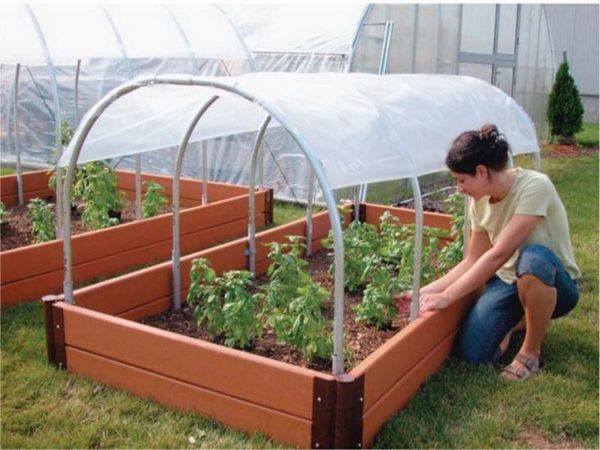
Glass makes the structure heavier and therefore, first of all, it will be necessary to take care of strengthening the frame or mounting the foundation.
Professional gardeners use certain covering materials for certain mini-greenhouse models:
- Polycarbonate sheets are suitable for the butterfly, bread box models.
- Polyethylene - for those structures that will be located in the apartment, at home, on the balcony.
- Glass - for stationary hotbeds on a personal plot.
Features and Benefits
The mini-greenhouse maintains a high temperature and can maintain constant humidity for a long time. If you live in a city apartment. A small greenhouse will be a great place to grow greens.
It is also suitable for growing seedlings of whimsical plants. Indeed, many gardeners have met more than once with the fact that when planting seeds, their germination was zero. When grown in mini-greenhouses, optimal conditions for germination are created.
Main disadvantages
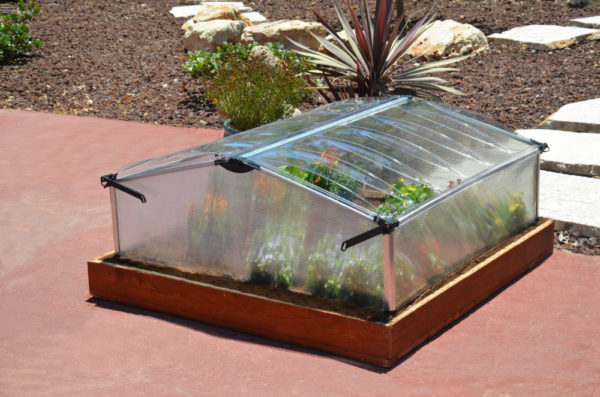
Like any design, a mini-greenhouse has not only positive sides, but also negative ones. These include:
- poorly tolerated by strong winds;
- the assortment of cultivated plant varieties is narrow, since the height of the greenhouse is small;
- it is difficult to replace the covering material when it is damaged, since the fastening to the frame is complicated.
How to choose a design
Each garden, country or other piece of land is unique. It can differ in landscape features of the area, its size and, of course, the composition of the soil. In order to create ideal conditions for plant growth, it is worth carefully choosing the design of a mini-greenhouse. To do this, consider:
- individual features of the land;
- what area will be allocated in the area under it;
- what kind of lighting will be used;
- what volumes of seedlings or plants will be grown.
Given all of the above, you can choose the right type of mini-greenhouse for your site and seedlings.
Installation of different types
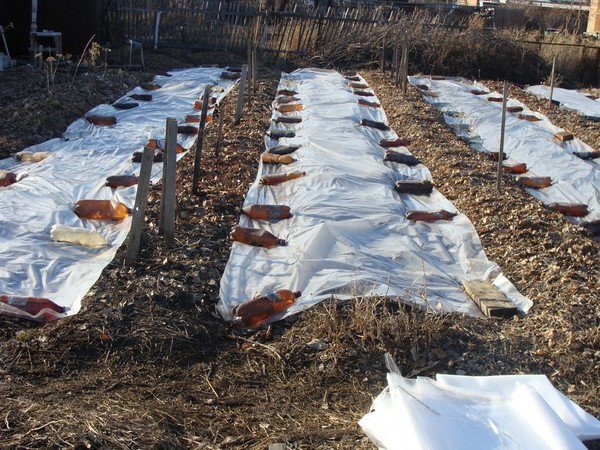
Mini-greenhouses, depending on the type of load-bearing structures, can be built using several different methods. For greater clarity, we will begin step-by-step recommendations for the construction of a mini-greenhouse that does not have a frame.
Such a greenhouse is a bed covered with a plastic film or other identical material. Sow the seeds and cover them with covering material from above, and at the edges they are pressed with bricks, wooden shafts.
Arched mini-greenhouse, instruction
To build an arched greenhouse, you will need to adhere to the following instructions:
- For construction, 5-6 arcs made of plastic or metal profile, a plastic film, a couple of meters of wire and about 20 clamps are needed.
- Do-it-yourself arcs or shop at the store.
- Install them at a distance of 35–45 centimeters from each other.
- To strengthen the frame, a wire is drawn between the arcs.
- Cover the resulting structure with a film. After they attach it on one side with clamps.
- On the other hand, the film is attached to a wooden battens. It is from this side that your greenhouse will open.
- On the sides, the structure is also covered with pieces of polyethylene and pressed them to the ground with a brick or a wooden bar.
Portable Polycarbonate Instruction

For the construction of a portable greenhouse from polycarbonate leaves, a more laborious, but no less interesting process. This will require:
- wooden slats;
- self-tapping screws;
- canopies;
- lever.
Instructions that must be observed during the construction of this mini-greenhouse:
- Make a framework basis. It should look like a box with a slanting top.
- From the racks mount the frame. It is used to create a greenhouse roof.
- A piece of polycarbonate sheet is inserted into the frame.
- A support for the frame - the roof - is built from a wooden bar.
- Attach a hook to the lid to fix the frame on the bar.
These construction methods are very easy to install, but they provide seeds and seedlings with optimal climatic temperatures and humidity for germination and further growth.
Bio-fuel in the construction of the greenhouse
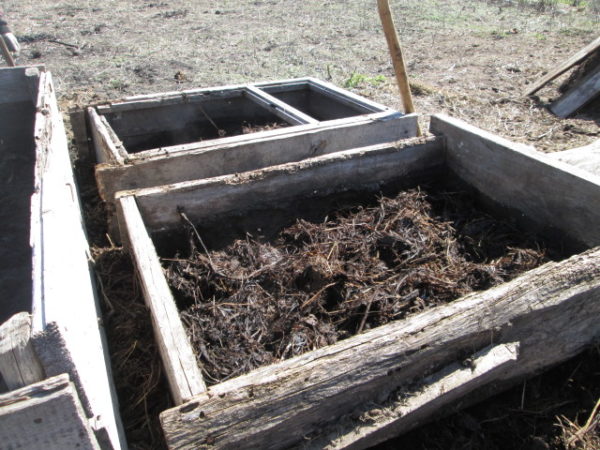
There are situations in which additional heating of small greenhouses is necessary. Biofuel can do just fine with this. Its installation is quite simple.
- After the place for installing a mini-greenhouse is established, dig a small hole.
- Manure, straw and dry leaves are mixed with the ground and placed in a pit.
- Water it thoroughly and place fertile soil on top.
- Now set the greenhouse.
The heating process is based on the decomposition of biological additives. Due to heat generation, additional heating of the soil under the plants takes place.
 You may be interested in:
You may be interested in:There are a huge number of mini-greenhouse constructions and everyone will be able to choose for their site the one that will ensure the best growth of seedlings and other garden crops, and at the same time will not occupy a large amount of space on the site.
A mini-greenhouse is a great way to grow healthy, high-quality seedlings that get used to future growth conditions gradually and after landing on a permanent place they are not sick and get used almost instantly.
If you do not have a summer cottage, then you can construct a small greenhouse and install it on the balcony or even in the apartment. In such conditions, you can eat greens fresh all year round.
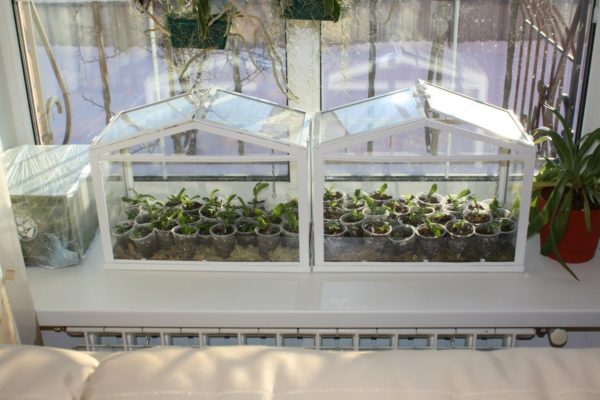
Use such small designs in the apartment, house and on the site and your crops will delight you every year.

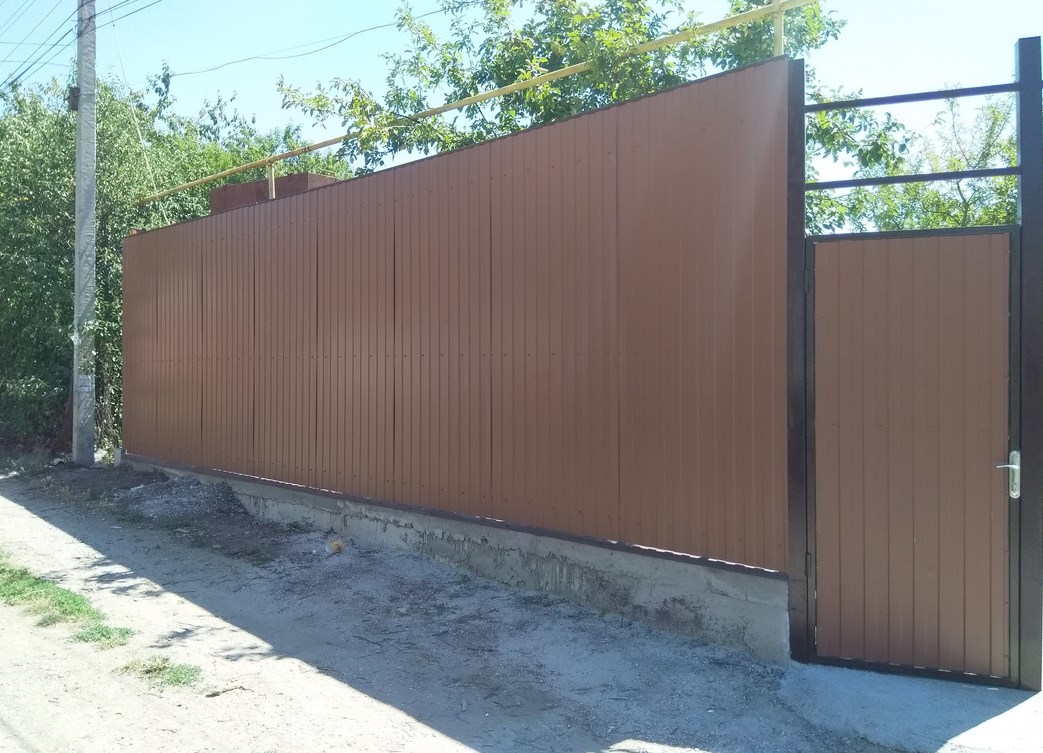
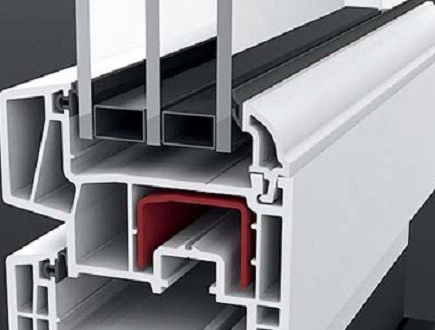
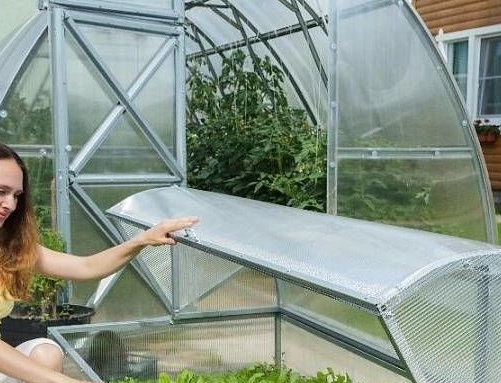
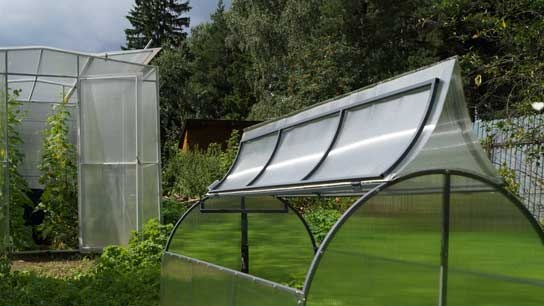 Why is a greenhouse open top?
Why is a greenhouse open top?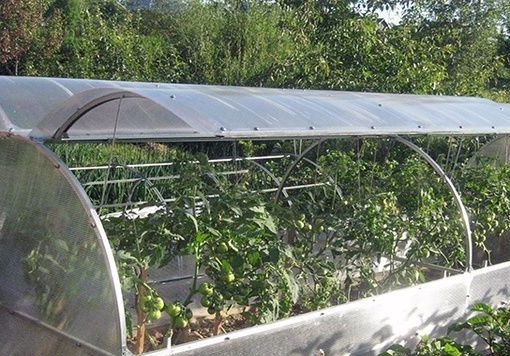 Greenhouse "Butterfly", is it worth it?
Greenhouse "Butterfly", is it worth it?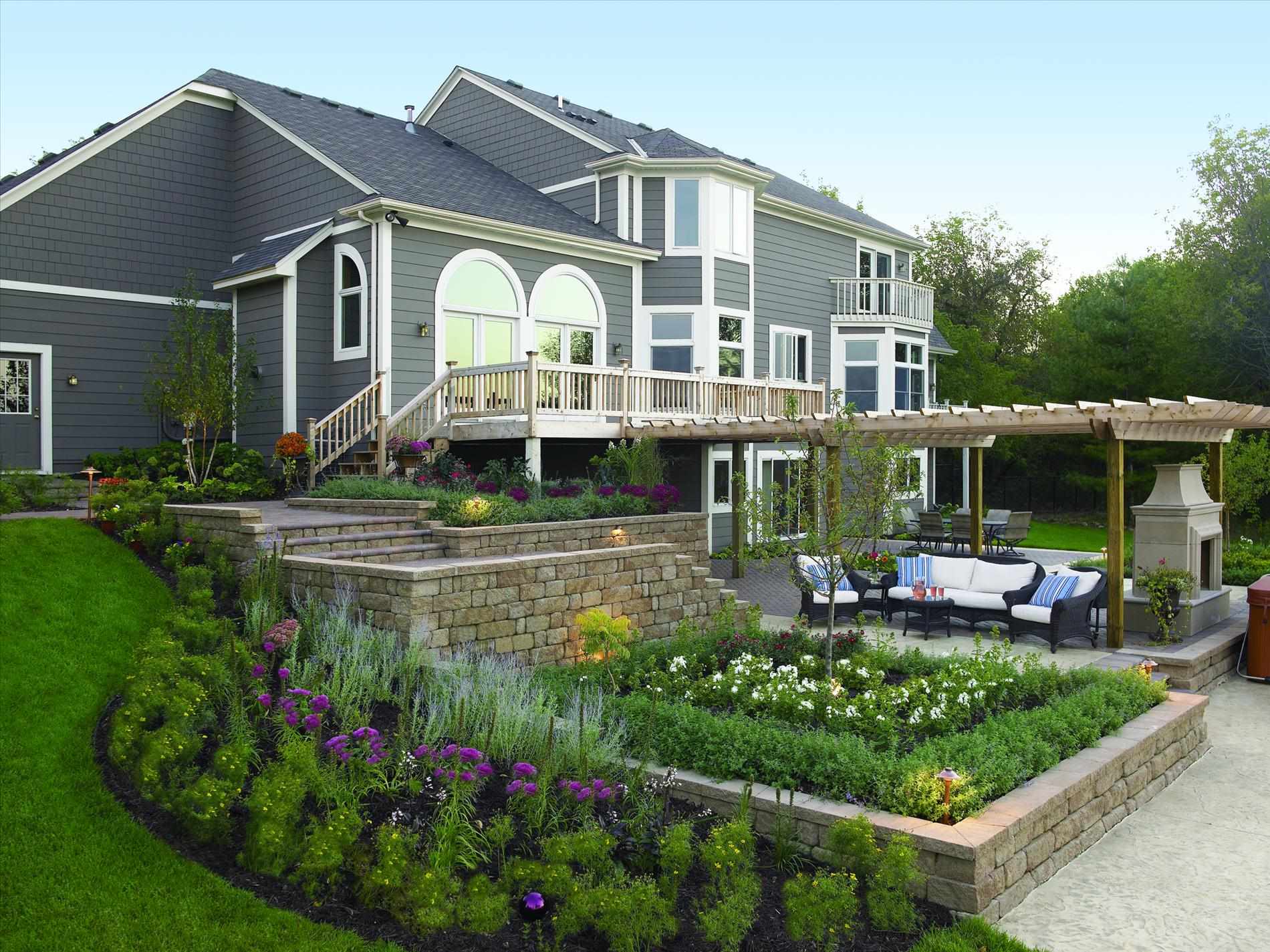 Do-it-yourself landscaping of an area of 8 acres: features of planning and zoning
Do-it-yourself landscaping of an area of 8 acres: features of planning and zoning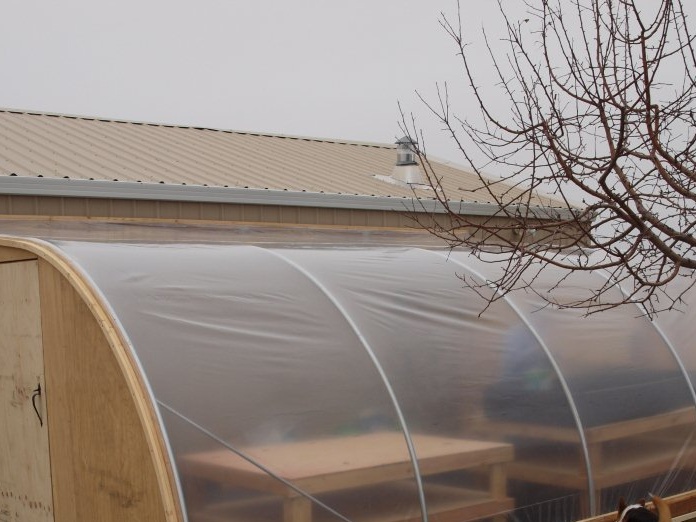 Shed greenhouse, pros and cons
Shed greenhouse, pros and cons